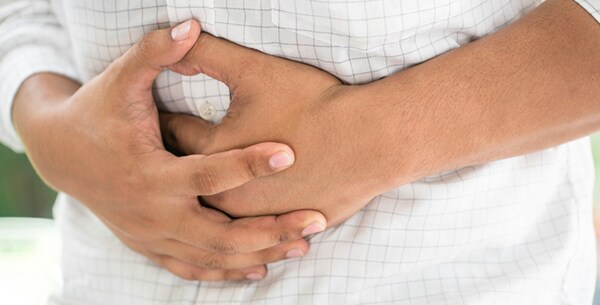Cuanta Vitamina C Tiene Una Guayaba
Cuanta Vitamina C Tiene Una Guayaba
Clostridium perfringens bacteria are one of the most common causes of foodborne illness (food poisoning). CDC estimates these bacteria cause nearly 1 million illnesses in the United States every year.
C. perfringens can be found on raw meat and poultry, in the intestines of animals, and in the environment.
These bacteria make spores, which act like protective coatings that help the bacteria survive. Under certain conditions, such as when food is kept at an unsafe temperatureexternal icon (between 40°F–140°F), C. perfringens can grow and multiply. After someone swallows the bacteria, it can produce a toxin (poison) that causes diarrhea.
Common sources of C. perfringens infection include meat, poultry, gravies, and other foods cooked in large batches and held at an unsafe temperature. Outbreaks tend to happen in places that serve large groups of people, such as hospitals, school cafeterias, prisons, and nursing homes, and at events with catered food. C. perfringens outbreaks occur most often in November and December. Many of these outbreaks have been linked to foods commonly served during the holidays, such as turkey and roast beef.
Anyone can get food poisoning from C. perfringens. Young children and older adults are at higher risk for severe illness.
Symptoms
Most people with C. perfringens infection develop diarrhea and stomach cramps within 6 to 24 hours after eating contaminated food. The illness usually begins suddenly and lasts for less than 24 hours. Diarrhea can cause dehydration, so it's important to drink plenty of fluids. This infection usually does not cause fever or vomiting, and it cannot be passed from one person to another.
Diagnosis and Treatment
Most people with C. perfringens infection do not receive a diagnosis.
Infection is confirmed when a laboratory test detects the bacteria or their toxin in a stool (poop) sample or the bacteria are found in food linked to illness. However, clinical laboratories do not routinely test for C. perfringens infection, and public health laboratories usually test for it only when it is the suspected cause of an outbreak. More information for healthcare professionals
Most people recover from C. perfringens infection without antibiotic treatment. Patients should drink extra fluids as long as diarrhea lasts.

Report Food Poisoning
If you think you or someone you know got sick from food, even if you don't know what food it was, please report it to your local health department. Reporting an illness can help public health officials identify a foodborne disease outbreak and keep others from getting sick.
Prevention
- Cook food to a safe temperatureexternal icon, especially beef roasts and whole poultry.
- After food is cooked, keep it at 140°F or warmer or 40°F or colderexternal icon if it will not be served and eaten soon.
- Refrigerate leftovers at 40°F or colder within 2 hours after cooking the food or within 2 hours after removing it from an appliance that's keeping it at a safe temperature. Refrigerate within 1 hour if the outside temperature is above 90°F.
-
- It is OK to put hot foods directly into the refrigerator.
- Divide large pots of food, such as soups and stews, and large cuts of meats, such as roasts, into small quantities for refrigeration. This helps food cool quickly enough to prevent bacteria from growing.
-
- Reheat leftovers to at least 165°F before serving.
Learn more about preventing food poisoning.
alert icon
Alert
Bacteria can multiply rapidly if food is left at room temperature or in the "danger zone" between 40°F and 140°F. Never leave perishable food, such as meat, poultry, eggs, and casseroles, in the danger zone for longer than 2 hours (or 1 hour if it's hotter than 90°F outside).
Information for Healthcare Professionals
Demonstration of C. perfringens enterotoxin in the stool or a count of ≥106 C. perfringens organisms per gram of stool within 48 hours of onset of typical illness is required to confirm infection. CDC accepts specimens only from foodborne outbreaks for testing.
Oral rehydration or, in severe cases, intravenous fluids with electrolytes can be used to prevent or treat dehydration. Antibiotic treatment is not recommended.
Selected Publications
- Foodborne disease outbreaks in correctional institutions—United States, 1998–2014. DOI PubMedexternal icon
Marlow MA, Luna-Gierke R, Griffin PM, Vieira, AR. American Journal of Public Health. 2017 Jul; 107(7): 1150–1156. - Epidemiology of foodborne disease outbreaks caused by Clostridium perfringens, United States, 1998–2010. DOI PubMedexternal icon
Grass JE, Gould LH, Mahon BE. Foodborne Pathog Dis. 2013 Feb; 10(2): 131–36. - Notes from the field: Clostridium perfringens gastroenteritis outbreak associated with a catered lunch—North Carolina, November 2015. DOI PubMedexternal icon
Rinsky JL, Berl E, Greene V, et al. MMWR Morb Mortal Wkly Rep 2016; 65: 1300–1301. - Foodborne disease outbreaks caused by Bacillus cereus, Clostridium perfringens, and Staphylococcus aureus—United States, 1998–2008. DOI PubMedexternal icon
Bennett SD, Walsh KA, Gould LH. Clin Infect Dis. 2013 Aug; 57(3): 425–33. - Foodborne illness acquired in the United States—major pathogens. DOI PubMedexternal icon
Scallan E, Hoekstra RM, Angulo FJ, Tauxe RV, Widdowson MA, Roy SL, et al. Emerg Infect Dis. 2011 Jan; 17(1): 7–15. - An assessment of the human health impact of seven leading foodborne pathogens in the United States using disability adjusted life years. DOI PubMedexternal icon
Scallan E, Hoekstra RM, Mahon BE, Jones TF, Griffin PM. Epidemiol Infect. 2015 Oct; 143(13): 2795–804.
Cuanta Vitamina C Tiene Una Guayaba
Source: https://www.cdc.gov/foodsafety/diseases/clostridium-perfringens.html/


Tidak ada komentar:
Tulis komentar